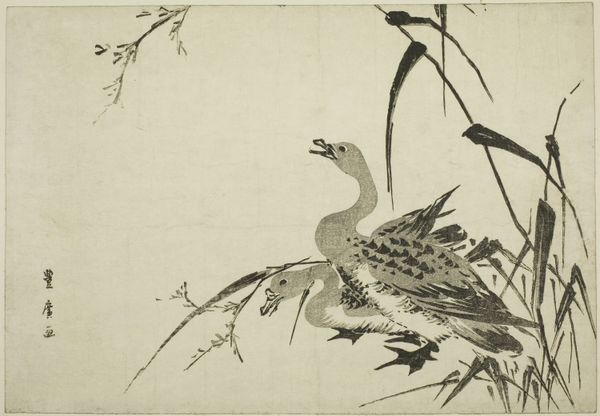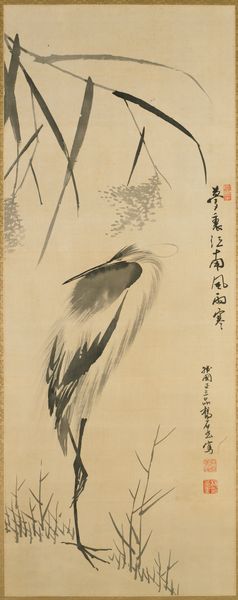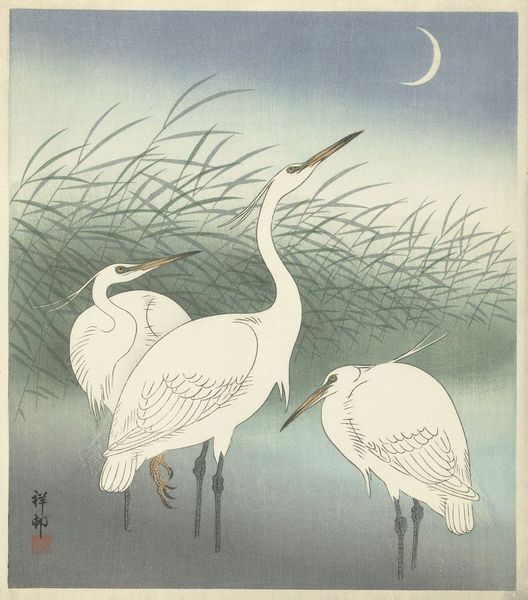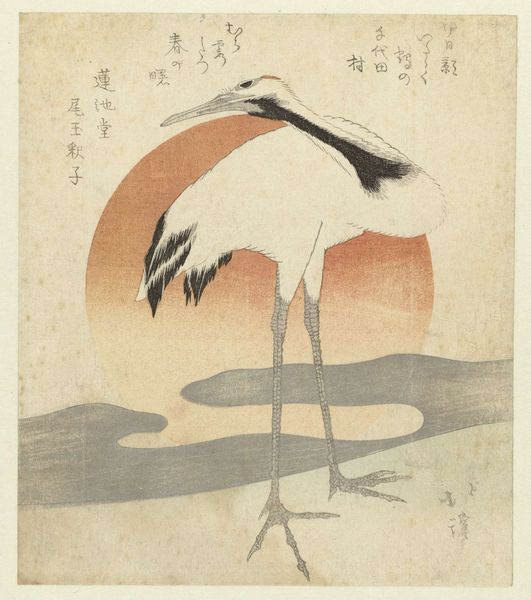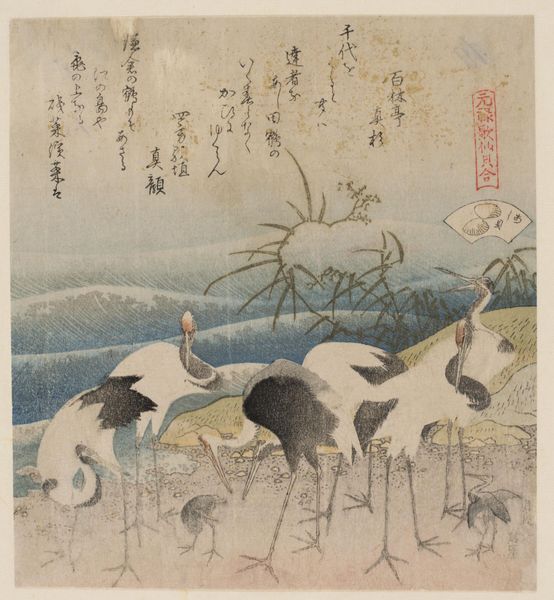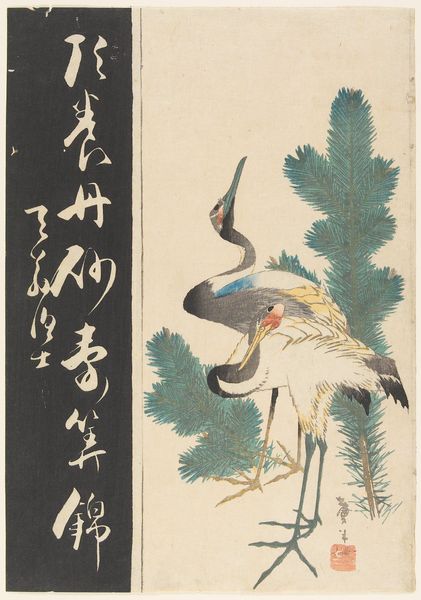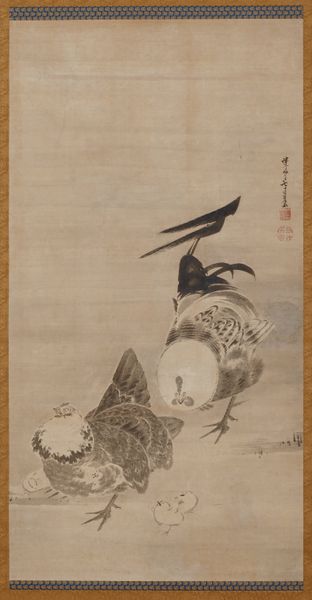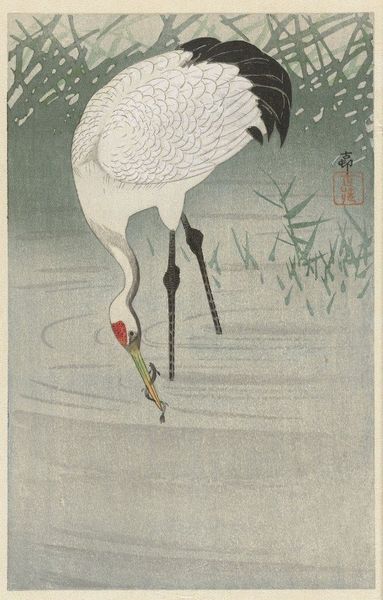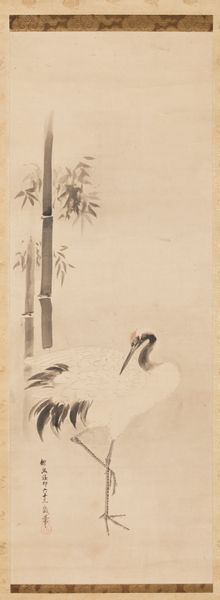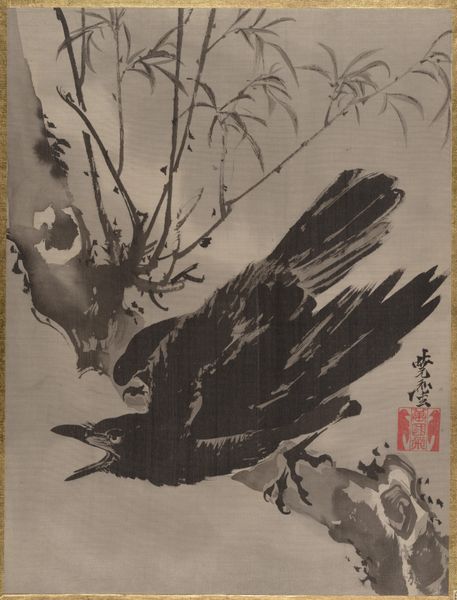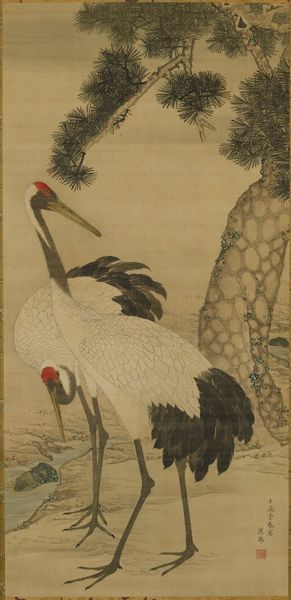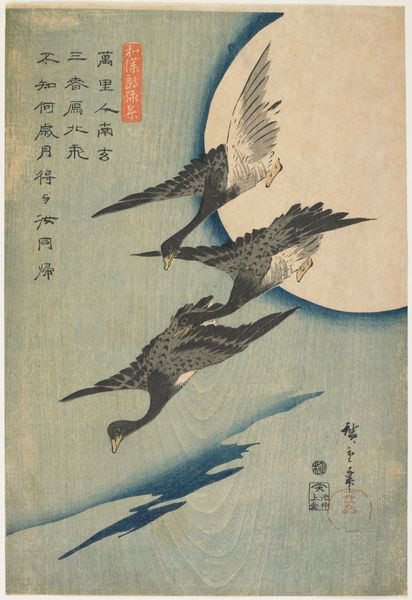
watercolor, ink
#
asian-art
#
landscape
#
figuration
#
watercolor
#
ink
#
24_meiji-period-1868-1912
#
watercolour illustration
#
watercolor
Dimensions: 14 1/4 x 10 1/2 in. (36.2 x 26.7 cm)
Copyright: Public Domain
Curator: This piece is entitled "Cranes in Marsh," a work by Kawanabe Kyōsai, crafted sometime between 1877 and 1897. Kyōsai worked with ink and watercolor. What’s your first take? Editor: The muted tones create a sense of quiet contemplation. I'm struck by the density of the reeds at the bottom and how that contrasts with the serene open sky at the top. The textural difference between the marsh grass, and the feathers of the crane makes it even more prominent, doesn't it? Curator: Indeed. Structurally, the composition plays with balance and asymmetry. The taller crane, rendered almost entirely in white, acts as a vertical counterpoint to the darker, crouched figure. The single, solid shape in the background, seemingly a sunrise, adds to the delicate balancing act. Editor: Absolutely, and thinking about the medium - ink and watercolor – you can see how crucial that material choice is. The layering effect, almost like washes, adds to the subtle, ephemeral quality. Imagine this scene rendered in oils. It'd lose that lightness entirely. We'd never have that transparency. And just think, this was created during the Meiji period, when there was a collision between Japanese tradition and Western techniques. Did this affect Kysosai? Curator: Exactly. Kyōsai’s work is seen as a critical reflection on that cultural shift. While the subject matter maintains a traditional Japanese aesthetic, you can see influences of Western realism in his rendering of form and perspective, and particularly in the observation of reflected light off the feathers. There's an ambiguity, it's hard to tell the emotional intention. Editor: You can really trace the artist's hand in those delicate strokes. Think about how much work must go into creating that level of depth through the various watercolor applications. A whole process! In terms of labour and craft, the time investment is huge for something that appears light. This forces a real consideration for the physical means of art making. Curator: Indeed, considering the period during which Kyosai was making art, you could certainly see that there’s commentary on a changing Japan that attempts to synthesize traditional styles with an outside world. Editor: Absolutely. Examining art with material processes in mind transforms the piece into more than just cranes and marsh. It reveals a tension between technique, vision, culture and labour. Curator: A fitting conclusion, bringing to light the intricate interplay of form, context and cultural dynamics woven into this seemingly simple work. Editor: Precisely. And recognizing the artistic value in physical work transforms not only our assessment, but the artwork's standing too!
Comments
No comments
Be the first to comment and join the conversation on the ultimate creative platform.

